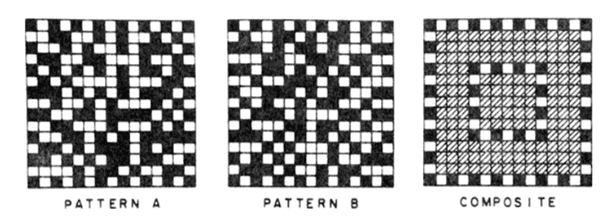Photographic memory refers to the ability to recall a past scene in its tiniest detail as if they were describing a photograph. Although photographic memory sounds amazing, there is no evidence that such a thing actually exists.
But what science seems to confirm is that relatively few people have the next best thing: eidetic memory.
Eidetic memory is the ability to vividly recall a scene, but only briefly, like a flashing image. Imagine seeing a photograph and then immediately closing your eyes. People with eidetic memory will be able to continue ‘seeing’ the image with their mind’s eye for another 30 seconds or so, and in some cases for entire minutes. The details start to fade after a while though, so this is not exactly photographic memory, which is supposedly still clear and vivid years later.
How eidetic memory works
Eidetic memory is believed to be controlled primarily by the posterior parietal cortex in the brain, where visual stimuli are processed and fragments of images retained. For most people, these images are only stored for a few short seconds before being discarded or transferred to short-term memory.
One of the first prominent scientists who investigated eidetic memory is psychologist Ralph Norman Haber. His interest in the subject was piqued during experiments on afterimages or “ghost” images. In this phenomenon, people, particularly children, can still see certain images in front of them for a brief period of time even after the photo is removed.
This is a harmless mind trick that results from photoreceptors in your retina getting fatigued from focusing on the same color for too long.

While performing these experiments, Haber was amazed to hear of cases of children who could keep seeing any image in front of them even after the image was removed. Subsequent research conducted by Haber and colleagues revealed that this eidetic ability is not particularly rare.
About 8% of the children the researchers tested had this ability, so nearly one in ten. But what exactly could these children see? Chances are it’s not what you expect.
The test was pretty simple. After an initial warmup round in which children were shown pictures of simple geometric figures and had to remember what they looked like after the pictures were removed, the researchers upped the difficulty by showing complex illustrations from a children’s book, packed with many different objects and graphic elements. The picture was placed on an easel in front of the subject for 30 seconds, after which it was taken away.

Each test subject was first asked if they could still see a mental picture of the image that was earlier in front of their eyes. Most said they couldn’t. The few children who could still see the image were immediately asked to describe in all detail what they saw.
Here’s an excerpt from a conversation between a 10-year-old boy and one of the researchers just after the illustration depicting an indigenous native surrounded by different kinds of animals was taken away.
E: Do you see anything there?
S: I can see the cactus – it’s got three limbs, and I can see the Indian, he’s holding something in his hand, there’s a deer beside him on his right-hand side – it looks like it’s looking toward me and three birds in upper left-hand corner, one in right-hand corner, it’s larger and a rabbit jumping off the little hill.
E: Can you tell me about the Indian – can you tell me about his feathers, how many are there?
S: Three or two.
E: Can you tell me about the feet of the deer?
S: They’re small.
E: Are they all on the ground?
S: No.
E: Can you tell which ones aren’t?
S: One of the front ones isn’t.
E: Tell me if it fades.
S: I can still see the birds and the Indian. I can’t see the rabbit anymore, (pause). Now it’s all gone.
In order to qualify as an eidetiker (a person with an eidetic memory), Haber came up with only two criteria:
- The mental image that lingered after the original illustration was removed had to appear in true colors rather than inverted colors, as seen in afterimage experiments.
- The person had to be able to describe the mental image as it was still physically there on the easel.
Although about one in ten qualified as eidetikers, the mental image faded in half a minute to a few minutes. Furthermore, although they had the advantage of “seeing” a relatively accurate image, eidetikers didn’t actually describe more objects than their non-eidetic peers who could only provide abstract descriptions of illustrated objects. They also made mistakes, naming things that were never there. This is an important point since many people confuse eidetic memory with photographic memory.
Eidetic memory vs photographic memory
The notion that some people of genius are capable of taking mental snapshots of what they see and remembering those things years later is certainly enthralling, but it seems no more than a myth. While the human eye can be described, at least functionally speaking, as the lens of a camera, our memory isn’t like that of a computer’s hard drive.
When we remember things, we reconstruct bits and pieces to form basic but inaccurate mental pictures. Often, we see or remember things that were never there in the first place. These are known as false memories, which are much more common than most people think.
People with eidetic memory are no exception. During one experiment involving one of Haber’s most gifted test subjects, a 12-year-old girl was asked to imagine that her eidetic picture of an elephant illustration was superimposed on a blank sheet of paper and had to trace its outlines with a pencil.
When she finished the task, her tracing drawing resembled a cartoonish version of an elephant, not too different from the kind children usually draw from imagination, rather than a realistic-looking elephant as shown in the original image. This experiment showed that eidetic images are merely reconstructions of reality, made to the brain’s best ability, but imperfect nevertheless — not at all like a genuine photograph.
Even though eidetikers may be better than regular people at taking mental snapshots, they still made the same kinds of mistakes, adding things that were never there or misremembering the position of certain objects.
Famous examples of photographic memory. How can we explain them?
But if truly photographic memory doesn’t exist, what of the remarkable memory abilities of some famous people? Teddy Roosevelt could recite entire newspaper pages—not just articles—as if they were sitting in front of him. Kim Peek — the real person Dustin Hoffman’s character was based on in the Oscar-winning movie Rain Man — memorized every word of every book he had ever read, estimated at around 9,000 books. Arturo Toscanini conducted operas from memory after his eyesight became too poor to read the music. And Lu Chao from China recited the first 67,890 digits of pi by employing memorization techniques.
People like Lu Chao don’t actually have super abilities to remember thousands of seemingly random numbers, but instead use very effective memory techniques. One such technique, called loci or the memory palace method, employs spatial or environmental cues to help learning and memory. In order to recall the digits in the right order, you simply have to do a mental walk through your mind palace. In Lu’s case, he devised an intricate story, and assigned images such as a chair, a king, or a horse to two-digit combinations of numbers ranging from “00” to “99.”
When they’re not using fancy mnemonic techniques, some people with truly impressive photographic-like memory may have what scientists call hyperthymesia, or Highly Superior Autobiographical Memory (HSAM). These are the kind of people that can tell you what they were up to on the 9th of May, 1999, or that it was a Sunday. They have a phenomenal ability to recall very specific details they lived through and tend to spend a large amount of time thinking about their past. Not surprisingly, HSAM has also been associated with a detailed understanding of the calendar and its patterns.
However, most people misunderstand how HSAM works. There seems to be this impression that people with HSAM can remember every trivial detail in their lives — but that’s not at all the case. In fact, people with HSAM are no better than you or me when it comes to remembering things like faces or phone numbers.
“Their memories are much more detailed than ours, and last for a longer period of time, but they’re still not video recordings,” says James McGaugh, the research professor at the University of California, Irvine, who first made HSAM known to the world. “Memory is a distracting process, and what we pull from our brains isn’t always entirely accurate.”
As for people like Roosevelt or Peek, whether or not they had HSAM is unclear, but studies on people who could memorize pages for entire volumes found they failed to recite paragraphs in reverse order. If their memories were truly like snapshots of pages from a book, they should have been able to reproduce the text in reverse order. Extraordinary memory, yes, but still not ‘photographic memory’ or what most people understand by the meaning of the term.
Eidetic memory test: Do you have eidetic memory?
If you go online searching for a “photographic memory test” you’ll find scores of pages that supposedly evaluate you on this ability, perhaps accompanied by a message taunting you that “less than 1% of people can pass this test…”
Just forget about those. They’re just parlor tricks, not genuine scientific tests. There is, however, a formally recognized test for objectively assessing eidetic memory. Called the composite image test, this challenging test involves super-imposing the mental snapshot of visualization, usually a grid, on top of another mental snapshot.
The idea is that if you truly have a realistic eidetic memory, you should be able to store a high-fidelity mental snapshot of an image — even if the image shows meaningless stuff, such as abstract geometrical grids of random black and white squares. Furthermore, if you truly can keep visualizing an image in your head even after the original image is out of sight, you shouldn’t have great difficulty superimposing that image on top of another similar image.
In this test, the two images show meaningless patterns of black and white blocks, but when combined, they form a single easily identifiable symbol, such as a square within a square. If you can see the symbol, then you truly have a realistic eidetic memory.

According to author Jonas von Essen, researchers Kent Gummerman and Cynthia Gray performed this test with 270 subjects, most of whom were children. Only two subjects fulfilled Haber’s criteria for eidetic memory and none could pass the composite image test. Perhaps someone will pass the test, but we’ve yet to find one.
But this shouldn’t take away from the eidetikers’ abilities, which are amazing in their own right. Children are the most likely to have eidetic memory, though they gradually lose this ability starting at age six when they learn to think more abstractly (i.e. in terms of time and space). It’s not clear why adults stop being eidetikers, but it may be some adaptation that helped us survive in our chaotic environments. After all, who wants to keep so many images in their heads of everything they see? Some of them aren’t pretty.


